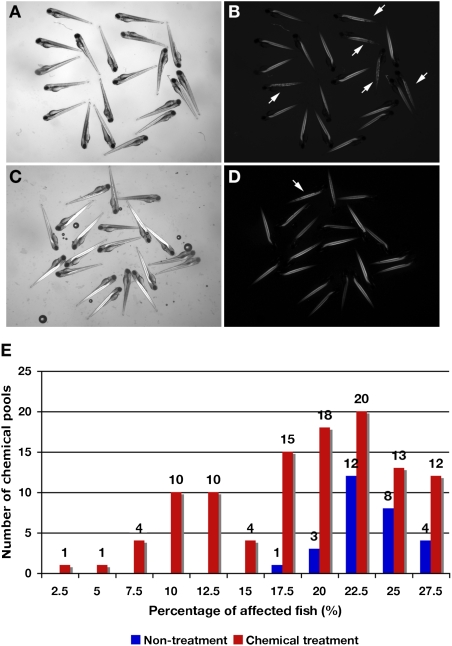Fig. 1.
Fish at 4 dpf from screening with the Prestwick library on heterozygous sapje fish pairs and the percentage of affected fish after chemical treatment with these chemical pools. Fish with nontreatment (A and B) and chemical treatment (C and D). (A and C) Bright image. (B and D) Birefringence image. In 20 embryos, five apparently affected fish are caused by a homozygous mutation in the zebrafish dystrophin gene, which is inherited in a recessive manner (25%; arrows). In fish treated with chemical pools, only one fish (5%; arrow) shows the muscle phenotype by birefringence. (E) Distribution of the percentage of affected fish treated with chemical pools and untreated fish. A total of 140 chemical pools (1,120 total chemicals) were tested. Treatment with 108 of the chemical pools was not lethal to the fish. Blue bars, untreated fish (n = 28; independent determination). Red bars, chemically treated fish with 108 chemical pools (in duplicate). Some chemical pools decreased the percentage of affected fish showing abnormal birefringence compared with untreated fish and might contain a compound able to restore normal muscle structure.

